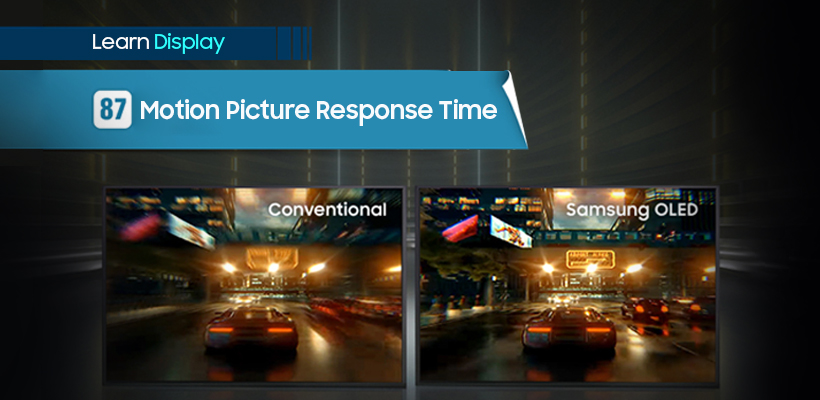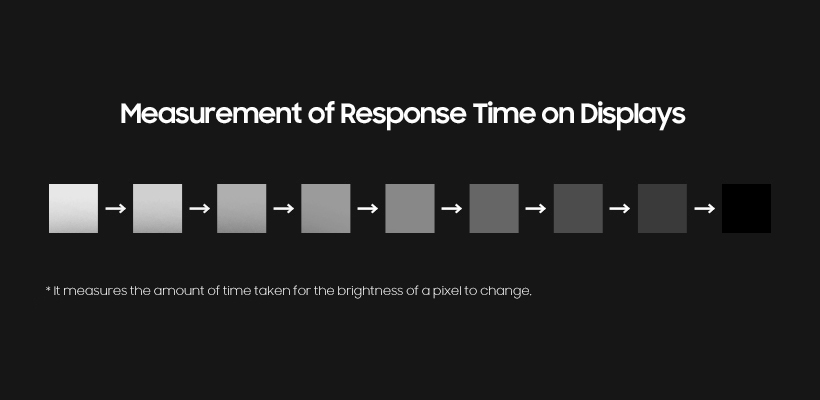
Motion/moving picture response time (MPRT) refers to the response time of videos (moving pictures) on a display panel, or in other words, the amount of time needed for a trail of pixels to appear and then disappear in a frame moving at a regular interval. Measured in milliseconds (ms), the same as for response time, MPRT determines how clear and natural moving images look. And the shorter it is, the clearer and more natural the images will look.

Normally, response time is a method of measuring the change in brightness of a pixel. It measures the amount of time for a pixel to go from shade 0 of gray (black) to shade 255 of gray (white) or the other way around. It can also measure the change in brightness from a certain, pre-determined shade of gray to another pre-determined shade of gray. One typical example of this method is the gray-to-gray method.
In contrast, MPRT measures the amount of time taken for a trail of a moving pattern to disappear while one frame of the video changes.

As indicated in the picture above, a particular pattern is shown on a display panel so that it moves at a certain speed. A camera records this movement to analyze the blurred edge time/width. Smaller the MPRT value of a display panel, the less is the trail of an image (or blurred edge time). An OLED display that is self-emissive has a shorter response time as it does not require liquid crystals and also has a lower MPRT for the same reason, which allows the display panel to generate clearer images.



